-
Posts
1,111 -
Joined
-
Last visited
Content Type
Profiles
Forums
Events
Store
Posts posted by James R Gordon
-
-
David,
You comment about “crappy Rydberg drawings.” What on earth are you talking about?
Humes testified that Harold Rydberg was “a hospital corpsman, second class, and a medical illustrator in our command at Naval Medical School.” He went on to explain how Rydberg created the three drawings. “The artist had but a brief period of some 2 days to prepare these. He had no photographs from which to work, and had to work under our description, verbal description, of what we had observed.” In addition to that, the descriptions and information that Humes gave to Rydberg were done from memory. Humes had no notes with him, nor did he have the autopsy images. It is understood he did not even have his autopsy protocol present.
They were not “crappy Rydberg drawings” they were “crappy Humes drawings.” Harold Rydberg had no input into the drawings, all input and information came from Humes and Boswell. So, in a sense, although Rydberg carried out the actual drawing, the real owner of these three drawings is Commanders Humes and Boswell. What is quite astonishingis, if we are to accept Humes description, is that four months had elapsed since the autopsy and yet he was able to instruct a corpsman on the details of a death that he had last worked on four months earlier. Yet to the Commission Humes made the following declaration:
Mr. SPECTER. Have you checked the drawings subsequent to their preparation to verify their accuracy?
Commander HUME. Yes, sir.
Though Humes goes on to comment about the problems of proportions he states – under oath – that these drawing are accurate and that he has checked that accuracy before coming before the Commission.
Are you really saying that the position of the lungs is a mistake that Humes did not see. And that after the bullet’s trajectory was drawn over it Humes still did not see the error with the lungs position.
In his Testimony Humes has made clear that in his mind CE385 is accurate and further that he has checked that accuracy before arriving at the Commission.
The position of the lung is a deliberate act by Commander Humes to underline a political point. He must have known medically that drawing was inaccurate but he states the drawing was accurate and he had checked it.
You go on to comment:
“the fact remains that President Kennedy's lungs and chest were NOT violated or punctured by any bullets. There were only BRUISES in those areas of JFK's body. You surely aren't DENYING that fact of "BRUISING ONLY" of those areas, are you James?
And since there was positively NO MAJOR DAMAGE inside Kennedy's neck and upper back, it means that NO BULLETS (no matter how many you think struck the President) hit the lungs or punctured the chest cavity of John F. Kennedy on November 22nd. ”
I am somewhat amused that you feel the above statements responds to my question how a bullet could transverse through JFK upper chest area. You reply is that it did because there was no damage. It is such an interesting comment because it is exactly what Humes said during his testimony.
But that is not the pertinent point. The point is that there should have been damage. A bullet traveling at 2000 ft per second should have created damage.
The SBT raises two questions.
a) How did the bullet get from entrance to exit without having to change direction? A question you have still not addressed.
Looking at the image below, how did the bullet not do any damage? You are aware the carotid artery is directly in the bullet’s path.
Body Image:-
I am awaiting you fourth go.
James.
-
David,
I am beginning to see why you might want to refuse to answer any questions on the medical evidence: you have no idea what it means.
Did you really think I would not notice this nonsense you have just posted about Commander Humes?
CE 385
First Humes points out that the entrance wound was higher than the exit wound. If so what is the wound we see on autopsy image of his back. It is below T1 and above T3. On CE 385 you can see the entrance is above Costa IR and Costa IR is at T1 level.
As I have pointed out to you numerous times – and you appear to either ignore or do not understand – CE 385 is a political document. It was created the way it was to support James Humes testimony. And one element of that testimony was to establish that CE 399 was able to wound the apex of the lung.
That is why you have cut out in the drawing demonstrating the bullet wounding the lungs apex.
I have some sympathy for Commander Humes but – even though he was not a forensic pathologist – he was medically competent doctor and fully understood Human Anatomy. And, though I seldom us the term I will here, here is one example where James Humes deliberately lies to the commission. Whether Specter understood that he was lying or simply did not understand the evidence being offered I do not know.
These drawings, as you very well know, may have been drawn by Ryberg, however everything in the drawings was at the instructions of James Humes. Ryberg, as he has placed in the public record, has stated he had no input to the content of the three drawings,
CE 385 Annotated
So what is the problem? In order to establish the lung could be damaged by the bullet – especially taking into account the raised entrance point – the apex of the lung was raised. Images B, C show that the apex of the lung is slightly above Costa IR. Image F also shows that the apex of the lung is slightly above Costa IR but below the Clavical R. Image A which is one of the xrays taken that night labels these bones. Image A2, a clear image, lets you see that the lung’s apex was below Clavical R but slightly above Costa IR
However CE 385 has the lungs apex well above Clavical R – see image E. Humes, elsewhere in his testimony says these drawnings (created under his supervision) are accurate. Yet if you look at image E you will see the apex is at the level of trachea rings 3 & 4. That is well into the upper chest cavity. First the upper chest cavity – that is the area above the Clavicals – contains all the major veins and arteries and other important organs. Second one of the functions of the rib structure is to protect the lungs and heart. Which is why these organs and well inside the exteriors of this structure,
So where is the lie? In order to prove that CE 399 could damage the apex of the lung Humes has distorted the position of the lung. The point? I had a medical examiner look at CE 385 some time ago. It was pointed out to me that any human being whose lung was that extended that far above the rib cage and that high into the body would have a serious medical condition.
Are you suggesting that James Humes was not aware of the distortion within this drawing? If so I do not believe it. But here is a challenge for you. Take a copy of CE 385 to any competent medical practitioner and ask them what would be the implication for any human being if their right lung was positioned as Humes describes JFK’s right lung. I believe the answer you will get is the same as I got.
James
-
David,
You really do go out of your way to avoid the issue. I raised the issue how anatomically is the SBT possible. I point out those parts of the theory I can follow and where - for me - there is a serious problem.
And what do you do???
You ask whether I accept the autopsy report and question me whether I believed the autopsy surgeons lied. I never raised either of these questions.
However, and here is a question, if the autopsy report cannot explain how the bullet got from the position of the star to exiting the throat then maybe there is an issue with the credibility of the report.
The simple point - about which there can be no argument - the bullet has to find a way from the star position to exiting the throat. If a path cannot be found, then everything else is moot. Everything else amounts to nothing is a path cannot be found..
James
-
David,
You comment to the forum that you do not require to respond to my post because you have already “hashed out all of this stuff.” Gosh! if only that were true. Then you link to pages on your web site.
You have not, whatever you may believe, debated these issues with me. The issue is very simple and it is one you have consistently avoided and ignored. My argument has nothing to do with all the images and quotes that are listed on the web page you directed us to. All that evidence has little, if anything, to do with the issue.
My question is how could a bullet pass through JFK’s upper chest area, without causing massive damage to his body. For example:-
Here, put simply, the bullet had to do the following.
1. The bullet had to enter above T1. Entering any lower and the bullet would have had to pass through the lung. We know that did not happen.
2. The bullet had to travel in a forward direction so that it could pass over the apex of the lung, indicated by the cyan circle.
3. The bullet has to exit out the throat. We both agree, for the SBT, the bullet exited through the throat.
4. So we get to the point where the star is.
5. At this point something has to happen. It is agreed the bullet has to exit through the throat yet the bullet is no where near the throat.
6. The yellow arrows indicate the kinds of directional changes the bullet must make.
7. We know the trachea was damaged. Charles Carrico saw that damage as indeed did Malcolm Perry.
8.Therefore if the trachea was damaged, by the bullet exiting, then at some point the bullet had to enter the trachea in order to exit it.
You tell the forum that you have, to used your words, “hashed” this out with me. You have replied to posts I have made but you have NEVER, NEVER, debated the issue.
Here is the issue. I can accept the SBT getting as far as the star. Thereafter I can see no way the bullet can find a way to exit the throat. All the hundreds of words detailed on your web site does not answer this pertinent question. How does the bullet find a path from the point with the star to exiting the throat.
My issue is that I can see no natural path from entrance to exit. I can get as far as the star but no further. And that problem is the weakness in the SBT. There is no way to get from the star to the throat. A direct line, which is theoretically possible will severely damage the spine.
James.
-
David,
Your shopping list means nothing if you cannot explain how the bullet transited from back to front in JFK’s body. Nor are you alone in ignoring inconvenient facts. Below is my oft quoted Dale Myers image. He has set up a clear trajectory line from the Oswald window through JFK and through John Connally. I do not dispute his trajectory analysis, it is a clear demonstration of the feasibility of the SBT.
However what I do dispute is the medical implications of such a trajectory analysis. In order to have the bullet penetrate John Connally he has the bullet travel through John Connally’s chest. The bullet never entered John Connally’s chest cavity – even though the HCSA decided that it had to. In addition Dale Myers has the bullet exit close to where the heart would be….making that wound for John Connally most likely a fatal wound.
When Robert Prudhomme reminded you about the wrist wound you reply “What difference does it make?” Really!!! It makes all the difference in the world and you know it does.
Dale Myers:-
Although the drawing below is not 100% accurate, there is a CAT which is accurate. For the SBT to be valid the bullet has to enter the back – at a point lower than the throat exit point. The bullet has no option but to go through the spine. The body does not have a direct route from back to throat without penetrating the spine. That is a medical fact about which there can be no dispute.
The CAT scan, as opposed to the drawing, makes clear that in order to do so it has to smash T1. But worse than that it also has to inflict damage on the spinal cord.
Your problem is that James Humes is on record stating that the spine was not damaged. Now the HCSA who did focus on the spine were at variance as to what they say but at worst suggested there might be cracks in it. But a crack is not sufficient. This bullet has to go through the spine, not just create a minor crack – if indeed there was one because the experts were never in agreement with what they saw.
You might be wondering what all those coloured arrows are for. They point to muscles that the autopsy report makes clear were not damaged. However for the bullet to make such a path through the body they need to be damaged,
But there is another problem. Assuming that the bullet does smash through T1 there is no bone matter between that point and the point of exit. Therefore when the bullet does exit, it is going in the wrong direction: it is traveling towards Nellie Connally. The bullet needs solid matter to strike and therefore be able to change its direction. Past the spine there is nothing solid enough to deflect a bullet.
And then, which I have not discussed, How was the bullet able to enter at a point lower than it exited? Somehow its height had to rise. How was that able to happen?
Cat Scan Drawing:-
As I see it you have three major problems.
First. The body has no natural path from entrance to exit without the body suffering incredible damage.
Second. The bullet enters at a point lower than it exit point. How was this bullet able on a downward trajectory move upwards in the body?
Third. If the bullet did take the direct route from entrance to exit, once it had passed T1 there was no means to correct its direction. It will exit going in the wrong direction.
You are just like Dale Myers, Vincent Bugliosi and Gerald Posner: they are happy to draw pretty straight lines without explaining how such lines are able to create a viable path through the human body. For you proof is the bodies aligned correctly; each was struck in their upper back; the fact JFK had a wound in his lower throat – actually it was between trachea rings 3 &4; you favourite – missing bullets; and so on.
Your problem is that unless it can be explained how a bullet could medically transit through JFK’s upper chest area – none of that makes any difference. Unless you can explain what is medically impossible, your shopping list is meaningless.
James
-
Very good question David.
There is no way of knowing what software was used. If you are asking whether Dale Myers was behind it, I doubt it. His manipulation of data has been clearly pointed out by you and others. However, and to be fair to Dale Myers, his depiction of data objects like the car are very accurate. As has been pointed out by others, the depiction of the car in this animation has major fundamental flaws.
I doubt his hand is behind this. If it was him, it would be in Lightwave. There are few, if any, exports - from Lightwave - to products like 3Ds Max or Cinema 4D that would not need masses of correction after import.
James.
-
Robert Prudhomme said:-
The cartoon of the wrist wound is about as bizarre as can be. It shows the bullet passing through JBC's hand, entering palm side, when, in reality, it passed through the lower end of his forearm between the two long bones, the radius and the ulna. As you say, James, the bullet entered the back side of his wrist, not the palm side, and exited the palm side of his wrist.
End quote.
I agree Robert. Remember that although the bullet entered the Dorsal side of the hand, it needs to be remembered that it was not the actual back of the hand it entered but behind the thumb. As you point out later in your response, in order for the bullet to strike and exit in the way it did would require a very unusual positioning of the wrist. Very close, as you point out, Connally would need to be double jointed to be able to be able to correctly position his arm in order for the bullet to enter and exit correctly.
Robert Prudhomme said:-
As you pointed out, the 6.5 mm FMJ bullet fired from the Carcano has great penetrating abilities, and for this reason, was used in Africa to hunt elephants, invariably with head shots. Contributing to this are its round nose, allowing it to punch through matter instead of deviating as a pointed bullet might, its tough jacket walls (thicker than any other 6.5 mm FMJ bullet) and its smaller calibre and extreme length which lend it great in flight stability, as well as great stability when travelling through matter. With all of this going for it, one is left to wonder how the bullet that entered JFK's skull disintegrated into miniscule particles, as it did.
End quote.
This is a really good point, and is not one that has been given a great deal of discussion. One of the really interesting points for me was when the Haag’s commented on the peculiarity of the Carcano ammunition. I had not been aware that because it was cylindrical it would have a very steady flight. I think those who support the SBT have been dealt a serious blow by this program. The Haag’s demonstrated that a Carcano bullet could travel through 46 wooden slats and also be essentially undamaged. In what way is the human head sufficiently different that it would allow this bullet, that could pass through 46 wooden slats, to explode when traveling through the human head?
The other point, which I mentioned in my post, is the power to penetrate that distance into those slats ought to have the bullet continue and smash into the car. The resistance offered by those slats is way beyond the resistance of the bodies of JFK and John Connally. The SBT supporters point out that after passing through Connally’s wrist had effectivly taken all power out of the bullet and it could only make a minor wound in the thigh. The Haag’s prove beyond dispute that this bullet would have had loads of power left. So I do not understand why it would not carry on to damage the inside of the car.
Robert Prudhomme said:-
Returning to the wrist wound, there are a number of things about it that many seem to be unaware of. For example, the bullet that struck JBC's wrist appears to have been tumbling when it hit, and did not strike nose first. Rather, the bullet hole in JBC's shirt cuff was easily as long as a Carcano bullet, indicating it struck JBC's wrist side on. There is further evidence of this in the wound.
End quote.
On this point I disagree. For me the authority on the wounding of John Connally is Gary Murr. He pointed out to me that Charles Gregory was firmly of the opinion that the bullet that struck the wrist was fragmented. It was not a pristine bullet. One point that made Gregory convinced it had already struck something was that fragments of Connally’s shirt and jacket had found their way into the wound. Only, I understand, damaged bullets do that.
Now you mention the idea that the bullet was tumbling. That seems highly unlikely given the kind of damage that was made to the shirt cuff. As you can see when the bullet entered through the shirt the damage created a kind of star shape. A tumbling bullet does not do that.
Connally shirt cuff damage:-
James
-
Aside from positioning the JFK back wound incorrectly and having the bullet exit through the middle of John Connally’s chest, they also have the bullet enter and exit on the wrong sides of Connally’s hand/wrist. Do these people not do any basic research?
Wrist wounding:-
However this test really interested me. Firing the rifle from the correct distance this bullet managed to penetrate 46 slats of wood. Assuming the SBT is correct, which I do not agree with, from the entry in JFK’s back to exiting John Connally’s chest – aside from slapping into Connally’s 5th rib – this bullet encountered no bones. Allow the bullet the damage to the wrist bones – which has to be nothing like 46 slats of wood – why did this bullet not go on to strike the inside of the car and do visible damage?
How can the experiment bullet pass through 46 slats of wood, but looses all energy after Connally’s wrist wound? Does not make much sense to me.
46 Slats of wood:-
James
-
John,
I am sorry to hear this forum will close when it is up for renewal.
I feel it has been an important source for serious JFK research.
James.
-
John,
I understand the site is undergoing a serious revision. However, that said, the site appears to be stalled at the moment. When the link to the new site is clicked the message is that it will shortly re-open, but it has been like that since November.
I know Debra is unwell and that may be one of the reasons for the continuing delay.
I hope it does open again, but I am fearful of what will happen the longer it takes and whether members will return.
The link I have to the new site is below.
http://jfklancerforum.wordpress.com
James
-
David,
In your recent address at Bismarck State College you made a point that I felt then, and now, is an important basis for serious research. You comment on the importance of the divergence between the evidence and the historical narrative.
This memo is one such example. If it is a valid document, and you give very good reasons why it is indeed a valid document, then the document is a serious flaw in the historical narrative.
I did find it curious that Sergeant Boyajian did not remember the details of a night that is etched into the memory of all who remember that event.
Thanks.
James.
-
Daniel,
I have not read the Harrison/DiEugenio conversation. I will look at it. I like much in Douglas Horne’s work, although there are also aspects I disagree with. I cannot accept the idea that James Hume’s carried out the Pre-Post Mortem. I am on the fence regarding Roy Kellerman and initially was aghast with his descriptions of John Connally and Lyndon Johnston. I am not now quite so upset with those portraits. If I remember correctly, I believe he also posited the Bill Greer shot JFK scenario. However, there is much that is worth reading in his work.
It is a while since I have read “Inside The ARRB” I will look back over it and read this conversation. That said, I do feel Jim is being a little unkind to suggest that the only aspect or worth is the Boyajian document. Although maybe not at the top of everybody’s lists, one thing I do like and appreciate are his various summary tables. I have found them very useful.
Thanks for the heads up on this.
James.
-
I watched this video. It was somewhat difficult to follow at times, and appears based on his multivolume work Inside the ARRB.
One thing that did stick out was his reliance on the Sergeant Boyajian memo that states that the coffin arrived at Bethesda at 6.35pm
I am wondering how reliable this document is. If it is authentic and unchallengeable it raises a series problem.
Horne's narrative is that the coffin arrived at 6.35, as per the Boyajian memo, and, recorded by by Sibbert and O'Neil, the official autopsy was at 8:00pm. Thereby allowing an hour and a half time disparity.
If the Boyajian memo is unimpeachable evidence then there is a series problem here.
I am curious what members feel about the integrity of this memo.
James
-
Richard,
Thanks for the comments. I used the Dealey Plaza Renovation Plat. That allowed me to have a North Plaza as well as a complete North and South Plaza.
The North Plaza was used for my work on the Connally trajectory analysis.
The red line running from the TSBD west all is 5ft wide
The blue line is 28 ft long.
So at 223/4 the car is 33ft from the side of the west wall.
James.
-
Gene Kelly asked whether it was thought a shot from the west 5th floor was possible.
This is my old model of the Plaza. I am in the process of completely rebuilding the model. However the essential dimensions are accurate.
The first car is at 223/4 and the second car is at 312/3.
Without hanging out the window, I am not sure at 223/4 it is a possible shot.
At 312/3 it might be possible, but it looks like a very difficult shot.
As can be seen the south wall is by far the better wall. The south west window was open throughout the assassination and it provides an excellent opportunity.
From the TSBD:-
Looking Back to the TSBD:-
James
-
David,
An interesting picture.
The quality of the image does not allow certainty, but it appears to me that no windows on the 4th floor of the west side are open. The middle window may be the one members are thinking about. I believe the TSBD windows did not open flush, i.e. only the divider being seen when the lower window is fully open. When the lower window was opened fully the lower edge of the window could still be seen Although hard to see, we can see part of the lower window wood ribs between the panes, suggesting the window is actually closed. We can see a person standing behind the south 4th floor window. However the sixth floor south window is open. Not very wide, but it is open.
James
-
Chris,
Your image illustrates just what an excellent firing position the Records building is. It is a far better location to fire from than the TSBD.
As I recollect there is evidence that shells were found on the roof long after the assassination.
However my problem with a Z312/3 point for the Connally chest wound goes back to Nellie's rescue. If Nellie was rescuing a wounded John Connally at Z 290 onwards, then Z312/3 could not also be the point he was wounded.
This harks back to a point I mentioned above. I was surprised to find that there are numerous moments that fit the point when John Connally could be wounded.
I have not the means to challenge your arithmetic, I just know that whatever the logic that suggests Z312/3 it has to be wrong if Connally was wounded earlier.
Looking at your image, would that tree on the LHS not impede accurate sighting?
James.
-
Blair,
What you see below is a model I used for a presentation earlier this year. However it will suffice to answer your question, which may also be in the minds of others.
When I began my 3D model the characters were clearly a concern. As I have stated on numerous occasions I am in awe of the animation skills of Dale Myers. His models are literally outstanding. The expense and work he went to is beyond criticism.
However he uses closed models. Yes the models look exactly like the people they represent, but you cannot see the wounds that Myers talks about. Nor can you verify that where he says the wound is, that is exactly where it is. We have to take Dale Myers on trust. I am not saying that Dale Myers is lying, but I am saying we cannot verify what he is saying.
By using an anatomical model that has the complete body systems I can replicate injury and damage to the body. What I have lost is identity.
That was a deliberate decision I made: to enable verification at the expense of identity.
In the image you see below you can verify that I have placed the trajectory pointer along the fifth rib. Now had I used a closed model, like Dale Myers, you could not verify what I was saying.
Z 197 model:-
James.
-
Robert,
By far the neatest explanation is that the wrist and the chest wound were inflicted at the same time. As I have pointed out a number of times the entrance wound was lateral to the dorsal: in simple terms just up from the position of the thumb. Highlighted by the yellow circle. It exited approx. in the middle of the volar surface, indicated by the red circle. The model is not exact, but it is reasonably accurate.
In order for the hand to be wounded in line with the damage viewed by Charles Gregory, it has to be raised and turned to an approx 45º. It cannot be flat against the chest, as it is at Z223/4 and indeed as it is around 230. So I always concluded it had to be at a different poin.
Wrist wound:-
I do not take the credit for this. It was Gary Murr who suggested that the damage to the jacket sleeve and shirt cuff suggested a fragmented bullet. A bullet that had already impacted something else. He asked that I look at Z 313 and see what that suggests. Below is my very first experiment. I will be coming back to this and will refine it far better than what is seen here. But even with this rough attempt I realized that Gary could be onto something.
Model Trajectory for fragment:-
Last year Chris Davidson gave me some very clear copies of Zapruder slides. So I went to Z 313 and began to see if there was anything within Zapruder to support this idea.
It is clear that something, be it blood and/or brain matter and/or bone matter and/or missile fragments are moving away from the head. And what struck me most one of these object is moving towards the wrist and towards the exact location of the entrance wound.
I know Connally did not receive his wrist wound when he received his chest wound. My model suggests that Z 313 is a possible moment and Z 313 tends to suggest that something is moving in the direction of the wrist.
Z 313:-
This does not prove the wrist was wounded at this time, but it is where my thinking is at present.
James.
-
Chris,
This is an interesting thread. I well remember that discussion with Bill. Indeed, there was a time that I also agreed with him that Connally was injured post head shot.
There was a time I believed that there was only one Zapruder frame when Connally could have been injured. I have since learnt that is an error. As you have eloquently pointed out it is quite possible to describe that wounding at Z 313. I have since realized that it is possible to set up trajectory analysis for Z317, Z 236, Z 230. I was even able to get a positive result for Z 346. However each originated from a different source. Z 317 went to the 6th floor west window; Z236 went to the Daltex and Z349 went to the County Courts.
I came to realize that which moment is chosen is a matter personal choice based on the what the research suggests. The only frame that never produced a positive result was Z 223/4. The twin trajectories, that I have written about so often, were what prohibited that from being a positive result.
My decision that Connally’s wounding took place before the head shot was my ability to demonstrate that between the late Z 280’s up to the early Z300’s Nellie can be clearly saving an already wounded John Connally. This was made possible in no small way to the quality of Z frames you gave me.
To cut a long story short I ended up believing the moment John Connally received his chest wound was Z 230. Although I am working on seriously upgrading my model and its images, below is a early example of my workings for Z 230.
Z 230 Combined image:-
It was interesting to me that Z 317 and Z 230 had both pointed to the 6th floor west window. These windows were open throughout the assassination. I became quite curious about what it was like behind this wall. If there were an assassin there what were conditions like. Generously Gary Murr shared with me an image, that was quite a shock for me. Down that south wall was a corridor. If there was more than one assassin there is no impediment to communicate and co-ordinate. For me this picture was another corroboration for this west window being a potential sniper point.
Behind the TSBD South Wall:-
I should have been more alert, but it was much later that I remembered the Dillard. I believe the window this image is taken from is window nearest to us in the above south wall. Therefore this person was very close to the sixth floor west wall.
Dillard Image:-
I appreciate you feel Z 313 is a possible moment and you are right to suggest that such a moment leads back to the Records building. However Nellie’s rescue tells me that cannot be. However, Z 313 could well be the moment John Connally’s wrist was injured.
James.
-
Bjørn,
You make the point:"The important thing is the lateral angle between the 6th floor window of TSBD and the sagittal plane through JFK’s body at the time he was hit."
That is not the important point. The implication you make is that the trajectory path inside and outside the body are equal. That they simply are not.
What you say about trajectory analysis outside the body is absolutely correct.
However for trajectory analysis inside the body, what you say is nonsense. Inside the body, what is important is the anatomical geography.
Within the body there are principles and conditions need to be abided by. Within the human body, you cannot make such a simplistic statement.
James.
-
Robert,
When I began examining the JFK assassination my main focus was directed by a single thought. I had noticed that people like Dale Myers, who although I disagree with his analysis I am in awe of his animation skills, was able to draw straight line trajectories. I could not understand how this bullet could travel in a straight line through a human body. I thought then, and I still think now, this is the true weakness in this theory. Outside the human body there are no obstacles to this bullet’s trajectory: inside the body is a veritable mine field of obstacles. And so I studied this aspect of the case and ended up writing an article on my thinking.
Pages 1 – 13 are about the anatomical weaknesses in the SBT. In those pages I do mention the tear to the trachea. You will find the first reference to that on page 11
In those first 13 pages I examine the SBT from within the medical criteria as laid down by Commander Humes. By that I mean that in the autopsy protocol he made a number of observations – or what I refer to as criteria for the SBT. These I list on page 4. The importance of these criteria is that any analysis of the SBT must comply with these criteria. And that includes what the SBT is not allowed to do.
My conclusions as to why I rejected the theory can be found on page 13.
Pages 14 to 24 look at the evidence that the throat wound was one of entrance.
Two points I felt were very important.
On Page 16 I show the X-rays and particularly example E. this was an xray taken before the autopsy began. I argue that it is clear major damage has been done to the vertebras because the whole neck and head slope to the right. This damage cannot be ascribed to Commander Humes because he had yet to start work on the body. I explain on the pages leading up to this point what caused that damage. When I first raised this issue, I remember someone suggesting that it was caused when the body was placed into the casket in Parkland. I have serious doubts that is a viable point.
On page 19 and following I look into the idea as to whether the lung had been damaged. The argument by the L/N’s is that the lung sustained no damage. I give reasons why that may well be in error.
And at this point, I agree I put my neck on the line. If the SBT is wrong and my analysis of the throat wound is right then the throat wound had to be an entry wound. However DVP, and others, take great delight taunting us with the question so where is this bullet?
My conclusion is that this damage to the lung is where the bullet rested and therefore, at some point, somebody somewhere removed it.
And I agree, at that point, I have entered David Lifton country.
Demise of the SBT:-
https://www.transferbigfiles.com/0a2eb94b-dd89-4cfc-b2a1-183dc0b76004/G9JdY7OpUr1LKTX72l1wwA2
James.
-
Robert Prudhomme said:
As the transverse processes of the lower cervical vertebrae and the top thoracic vertebra (T1) fit too tightly together to allow a bullet to pass between them, the Magic Bullet had no choice but to enter JFK at a location far to the right of the vertebrae, JUST to clear the transverse processes.
At last someone is discussing the problems of the SBT from an anatomical perspective. What you say, Robert, is absolutely right. But it is worse than even that. It is not just that there is no direct line from entrance to exit that does not compromise the vertebras.
A further problem is that when Charles Carrico attempted to assist with JFK's breathing he noticed a small wound in the trachea. This was confirmed by Malcolm Perry. Essentially this SBT required the bullet to exit through the trachea. That means, at some point the bullet had to enter the trachea – in order to exit through it.
In order to do that required the bullet to make two changes in trajectory angles [ one left and one right ] well above 60º.
James.
-
Robert,
I see Gary has beat me to replying to you. For me he is the expert in the case. In my opinion no one has a better understanding of the case than him. In his trilogy on the Connally case to be published soon, Gary made this observation.
“During his later testimony session before the Warren Commission, Dr. Gregory was asked numerous questions regarding the size, shape and location of the Governor’s forearm wound, but not a single question requiring a response illustrative of the actual operative procedures followed and the subsequent treatment resulting from the initial operation.”
I believe that has made life very difficult to be detailed in answering the kinds of questions you have raised. Because the WC appear not to have been interested and therefore future generations, like ourselves, who now want these answers are not able to get them.
When I began studying the case in a serious manner, Connally was not serious concern - he was an adjunct to the Kennedy woundings. It was Gary Murrs astonishing generosity to make available to me his Connally research that I began to see a truth that had evaded me until then. The wounding of John Connally is the Achilles heel of the JFK assassination. David Von Pein, who will have read these positing since Gary and I joined this conversation, will not be responding to these points. I like David, but he never discusses the case outside repeating WC cliches. On occasions Gary Mack has e-mailed me about various points often supportive of the official view. I once asked him about some of the Connally points I was making and got no reply. He is happy to go on the media and repeat the same cliches, but will not debate issues outside the mainstream view of the case.
Everybody is happy to repeat the accepted view of the case, but when detail - especially medical questions - are raised these people run a mile. Gary is quite right to point out that the Connally wounding is an "iceberg." So little attention was paid to it none appears to have seen anomalies that were glaring to any serious enquiry. Strange as it may appear, if the case is to be solved, it will be through the Connally wounds.
One thing that has opened up a completely new view, at least for me, on this case is the Nova 2013 point about the Carcarno rifle. Today Gary corrected me. It was the ammunition that was the critical point. He told me "I believe that what this program does indicate, among other things, is that at least in my opinion the results obtained have as much to do if not in total with the ammunition rather than the weapon itself. The 6.5mm ammo manufactured by the Western Cartridge Company is extremely stable in flight with great penetrating power. That, if for no other reason, is one of my main tenets for discarding the SBT. "
I had thought it was the gun, but actually it was the ammunition. I have always argued that the weak point in the SBT are those moments then the bullet travels through the bodies of JFK and John Connally. Well here is another one. Any bullet that can travel through 13 slats of pine, is going to go through two bodies no problem. In addition, not only is it not going to be spent by the time of the thigh wound, it is going to have the power to strike the inside of the car.
Again I see DVP has not entered this aspect of the conversation. But this is a serious problem for the L/N’s. Up till now the L/N’s point was that by the time of the thigh wound this was bullet that had all but spent its force. That is clearly not the case. Because the only serious bone that it struck on its journey was the radius bone, by the time the bullet exited the wrist it would still have a significant proportion of its power.
I will be interested to see what points the L/N’s will make on this issue. In my mind this has serious consequences for the SBT. And I await the L/N’s contributions.
James.


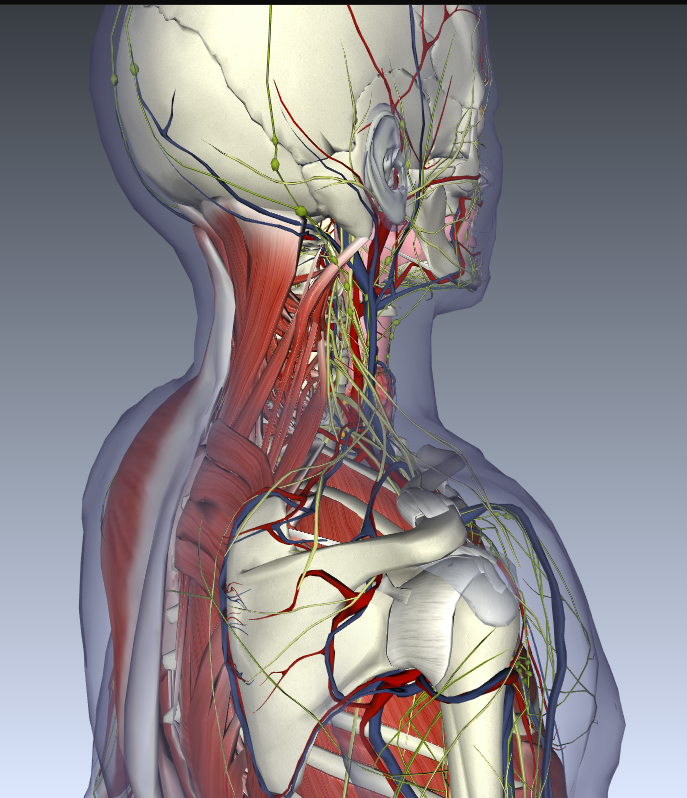
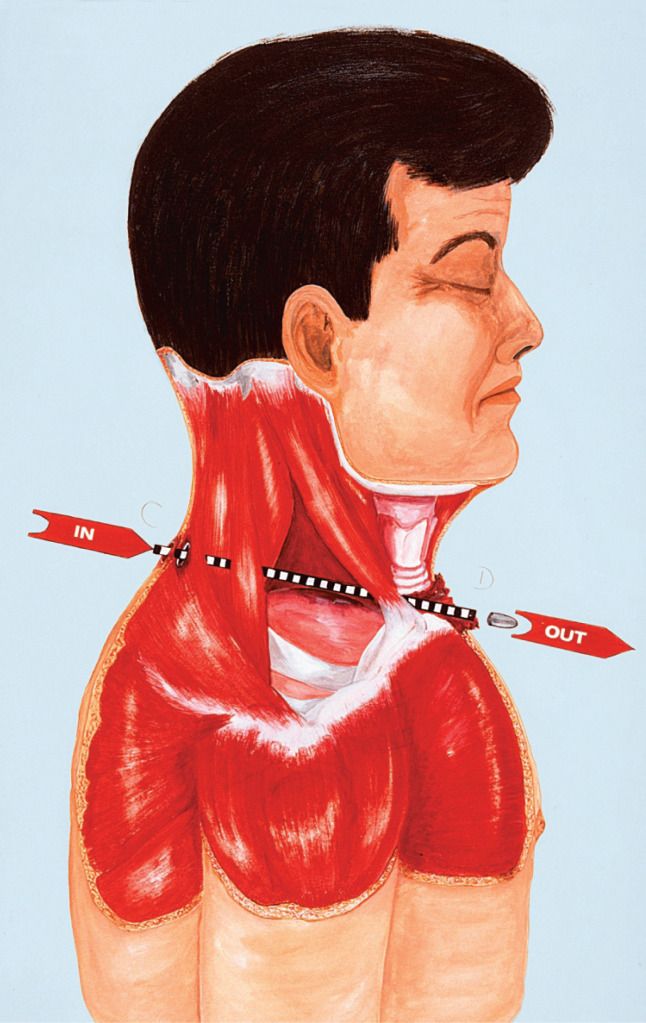

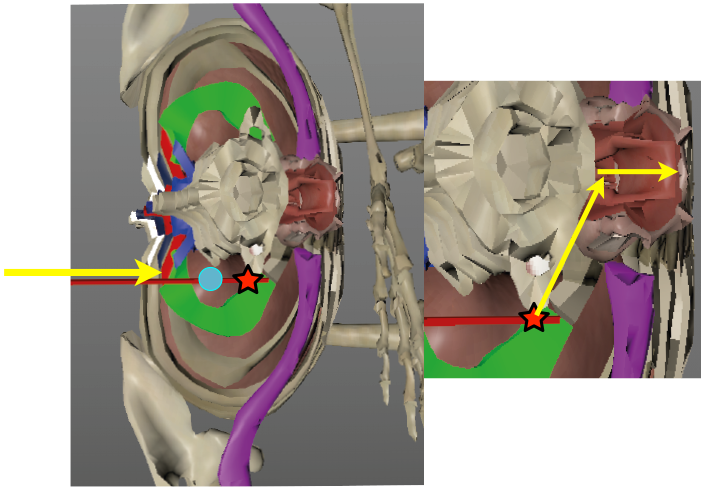

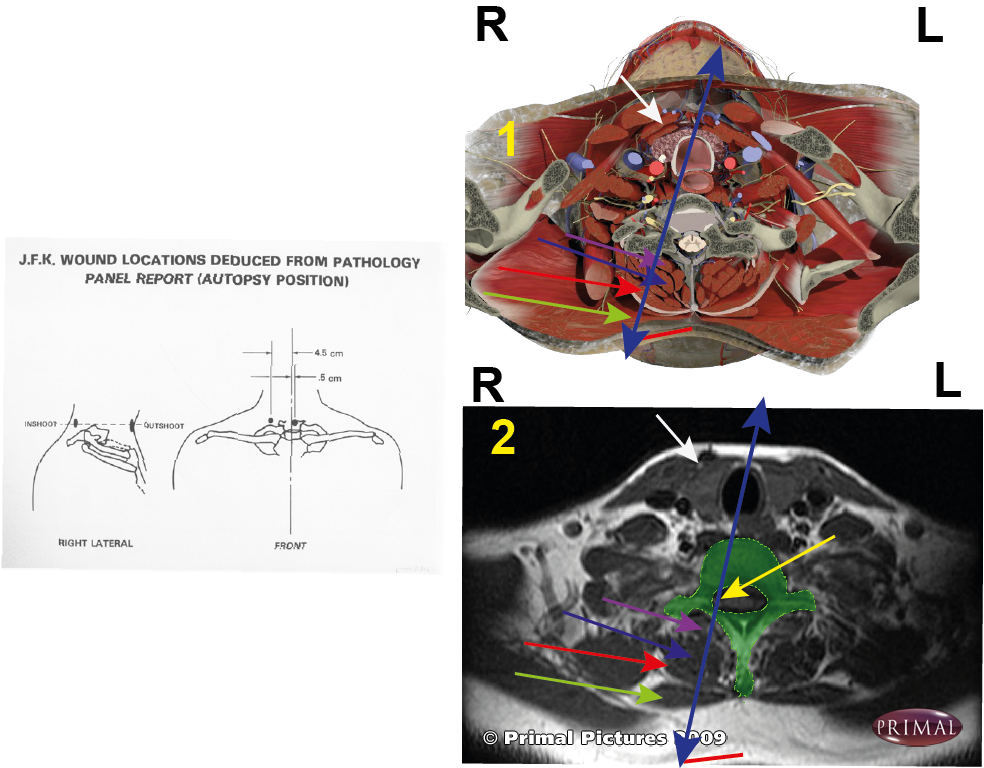

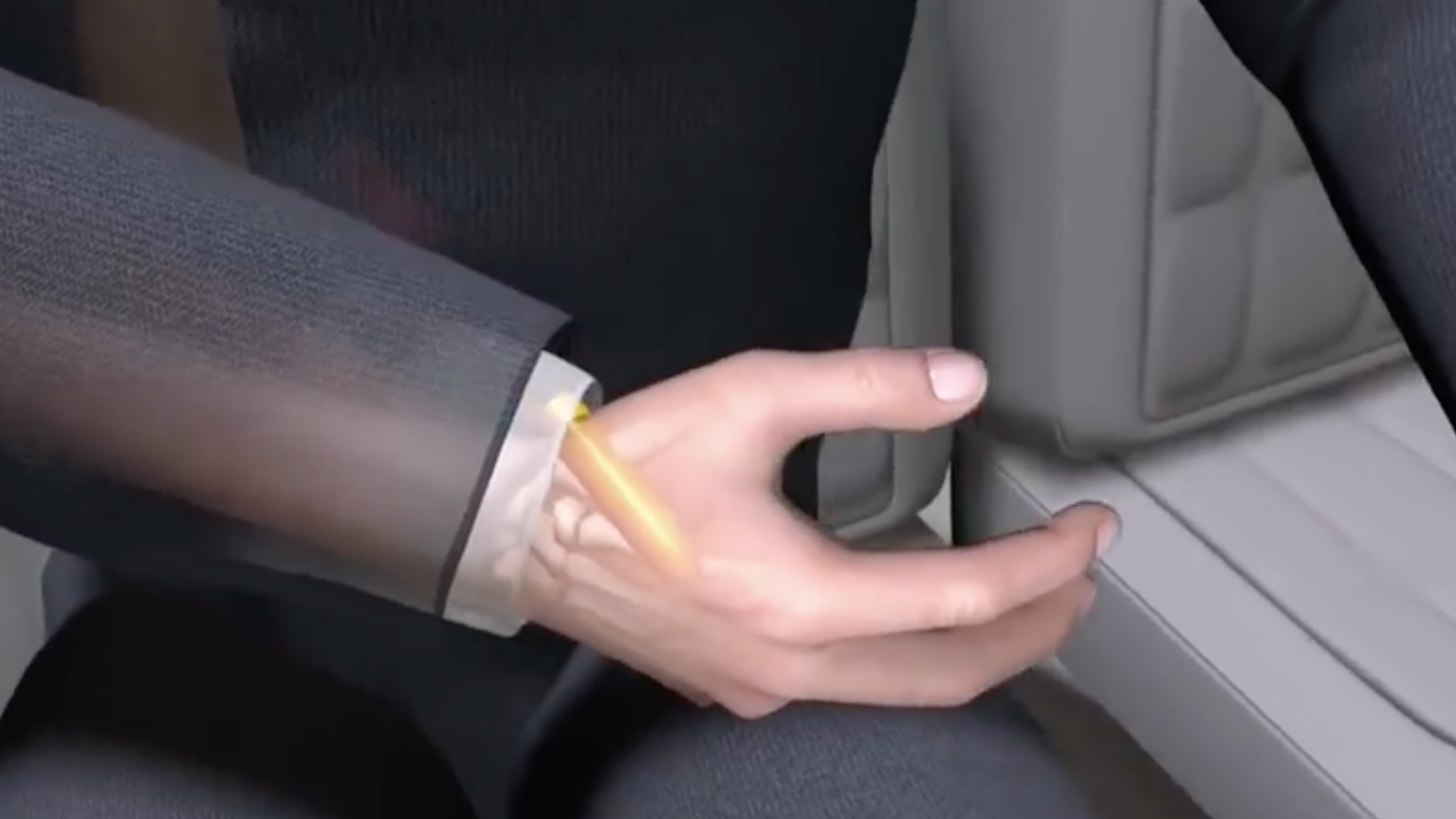
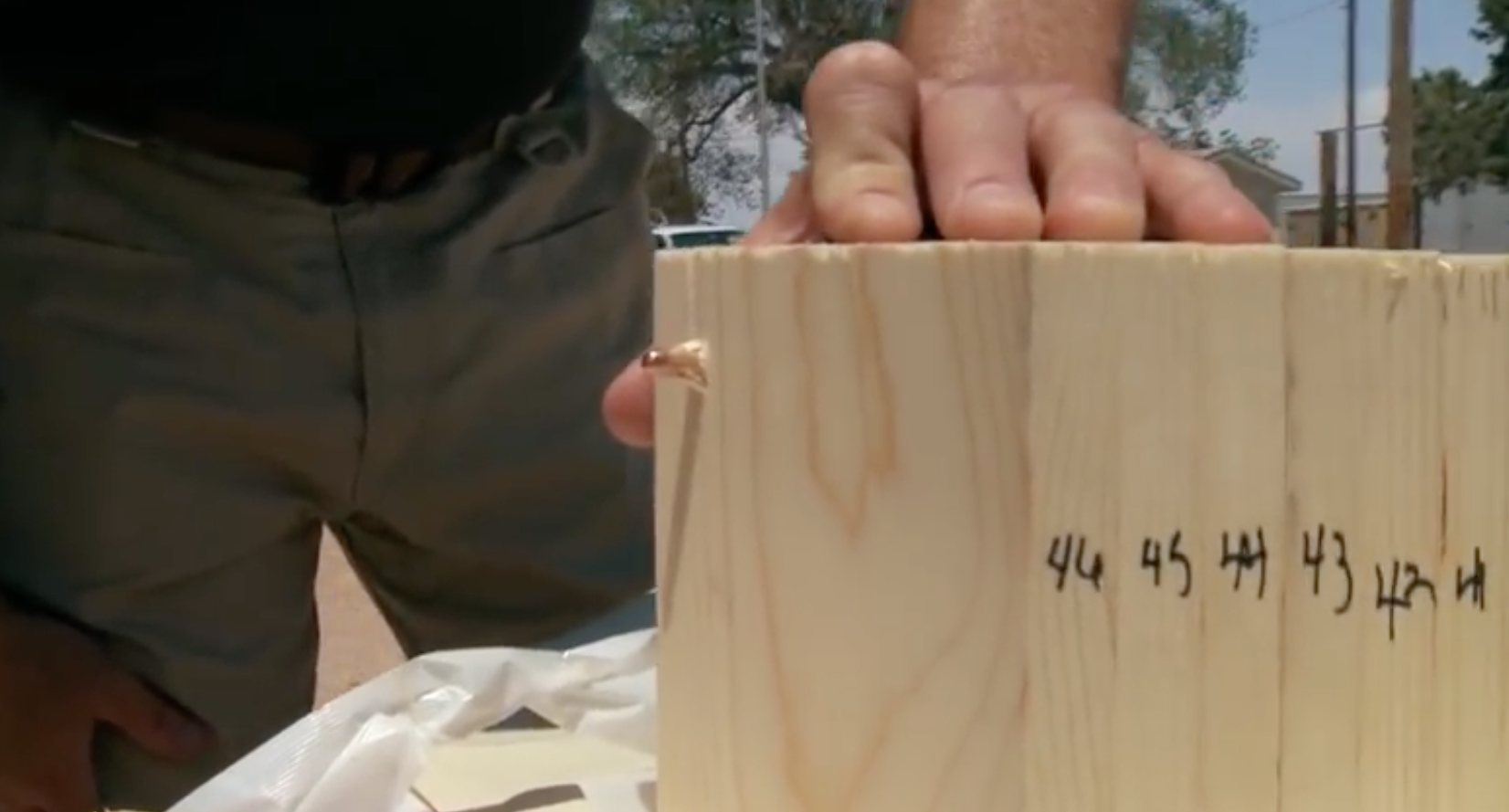
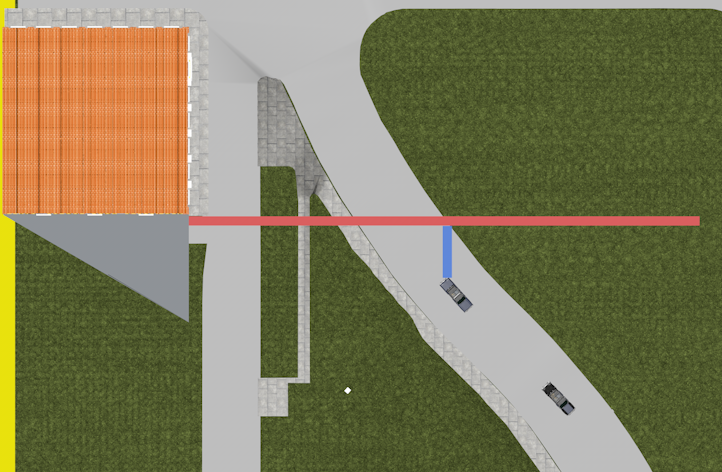
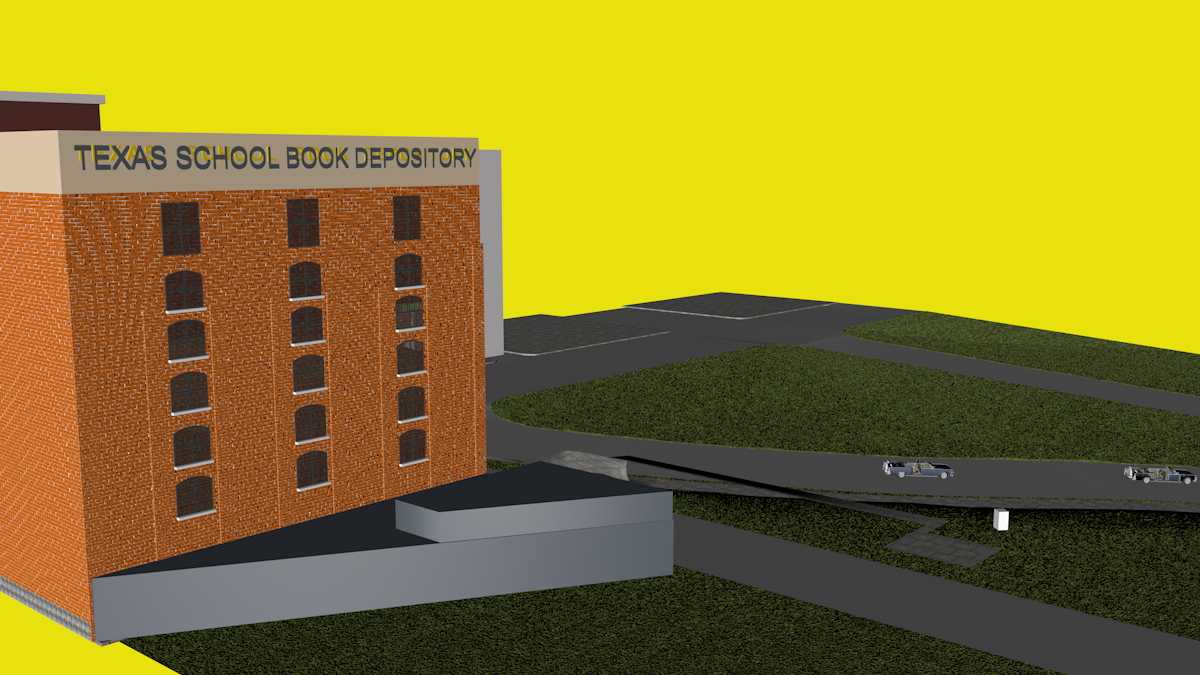
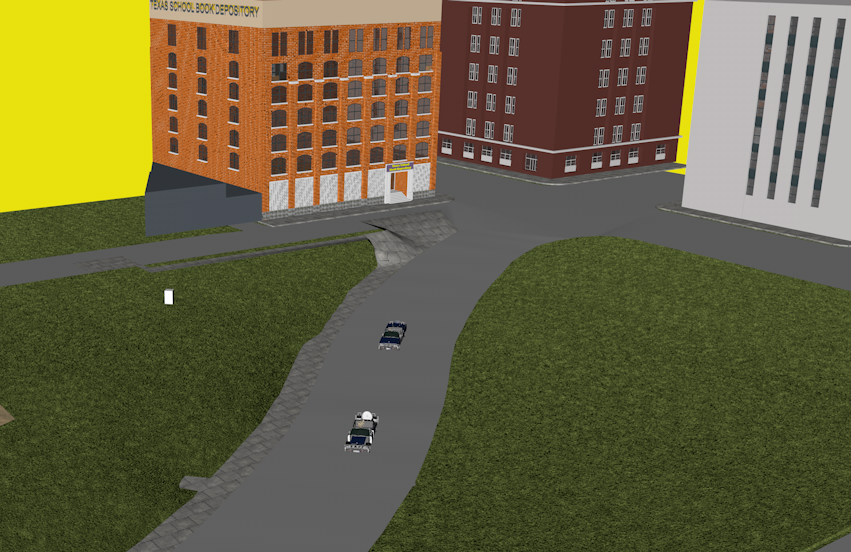
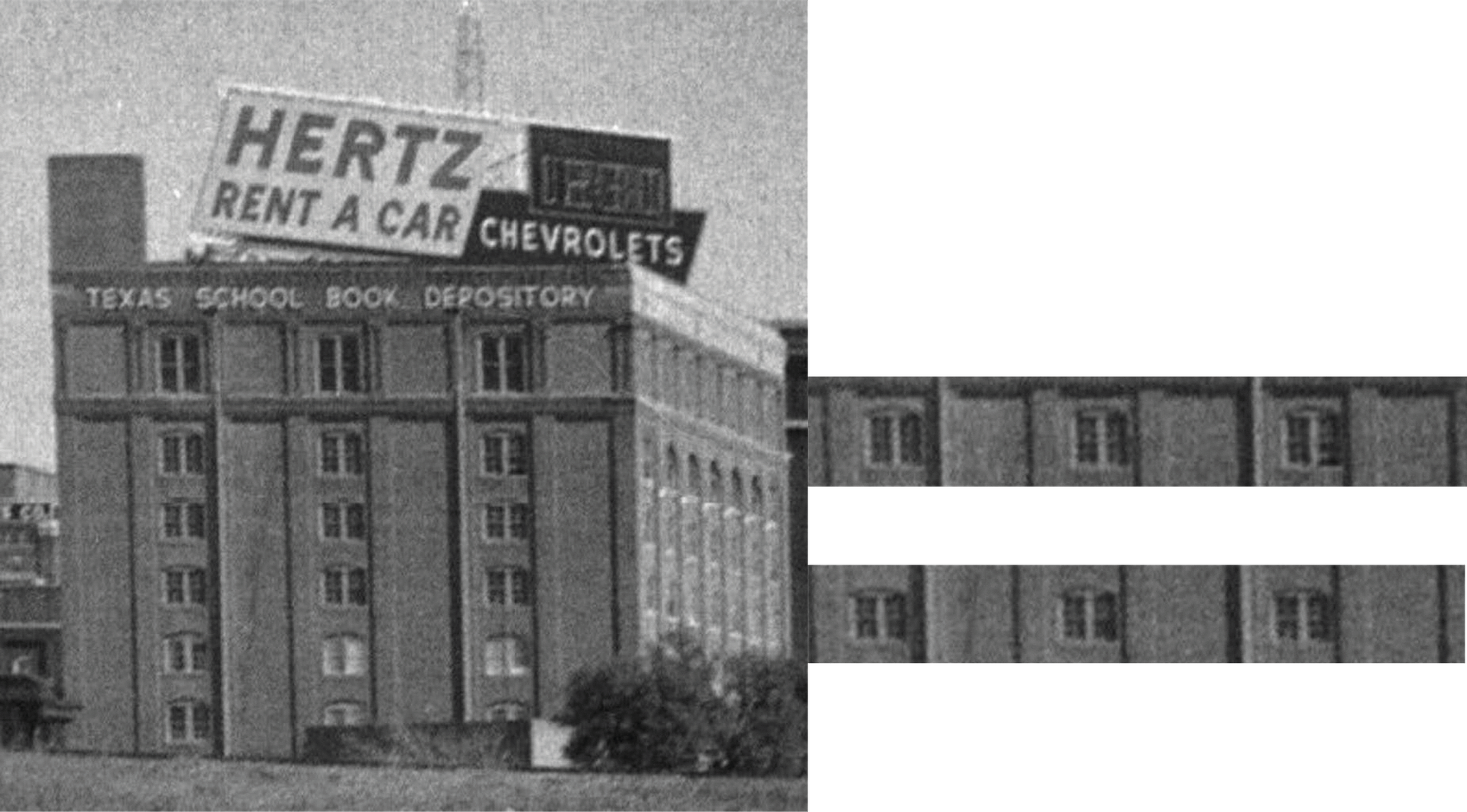
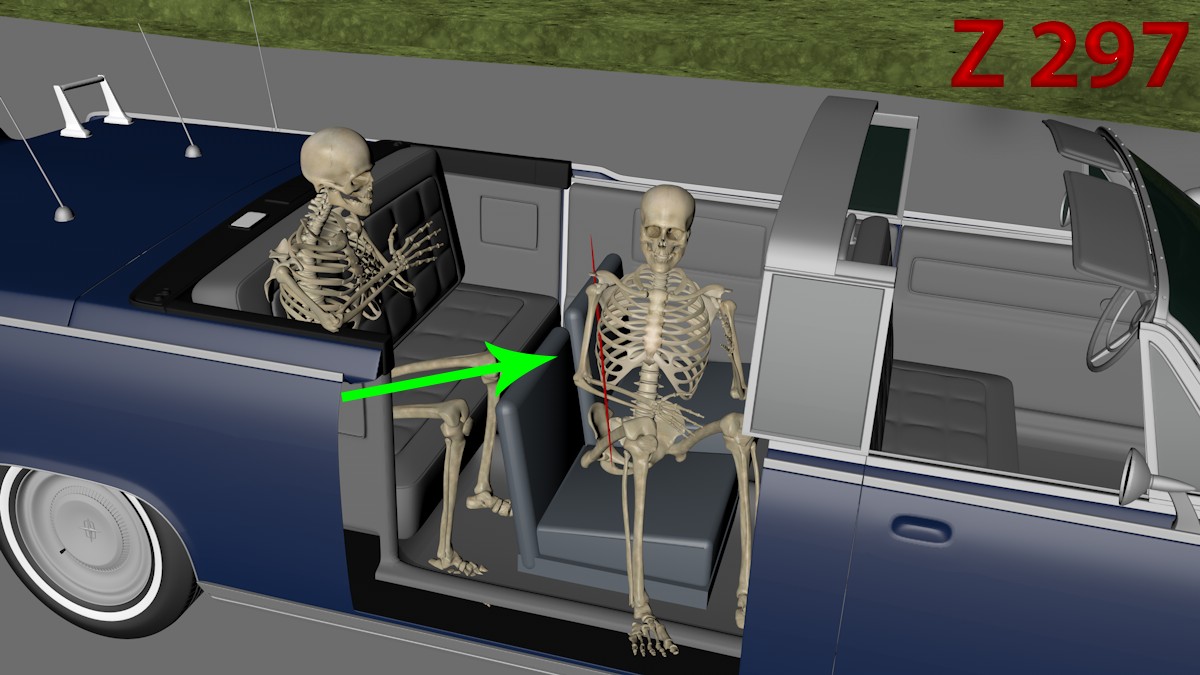
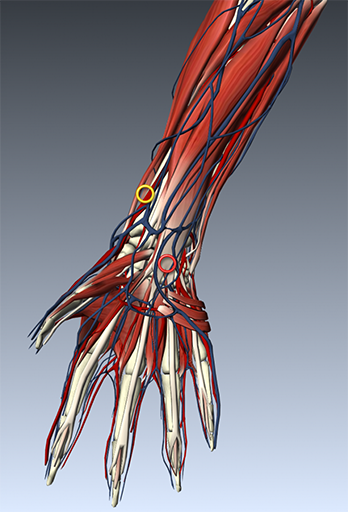

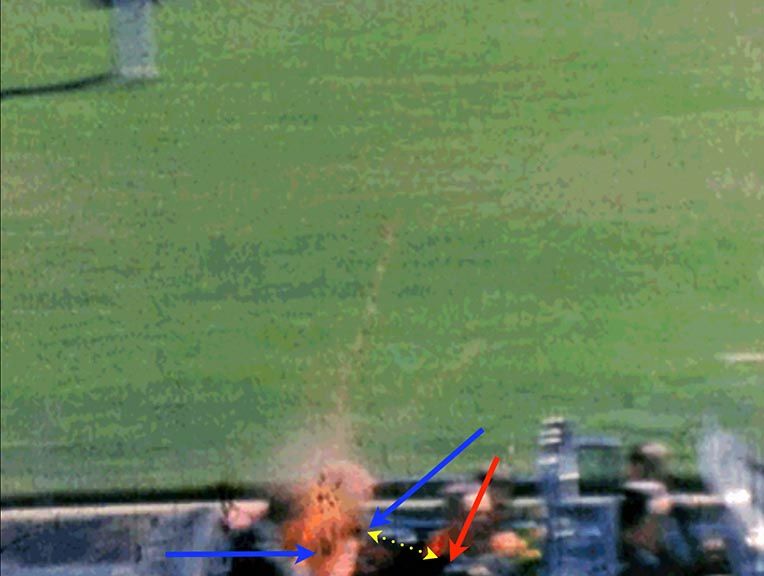

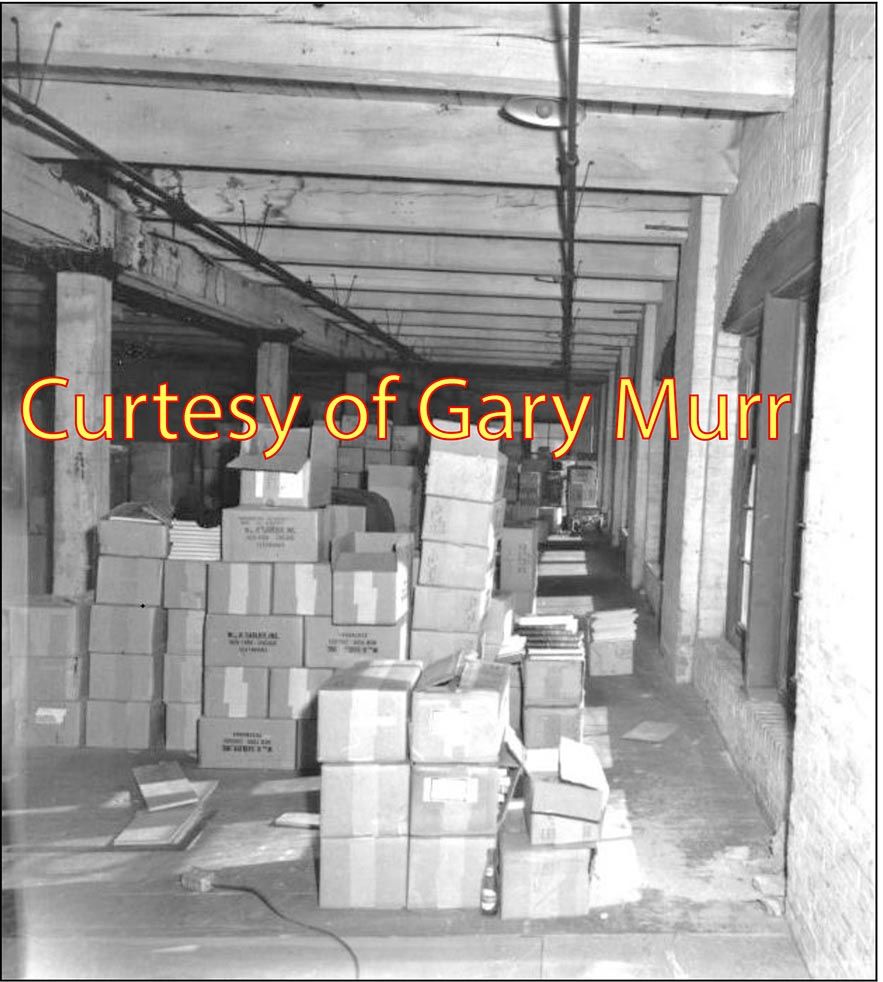
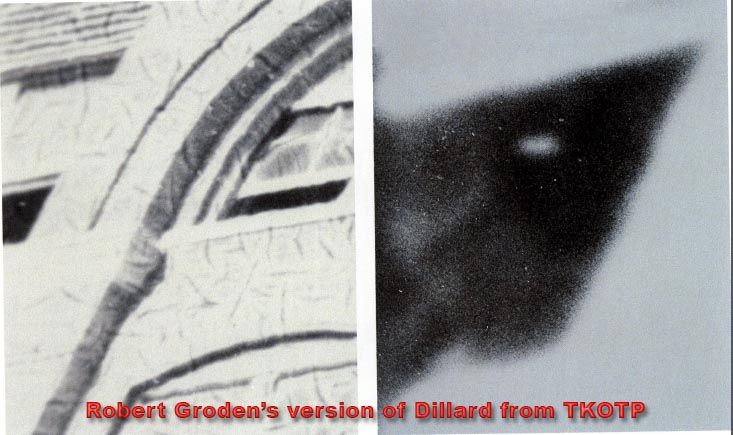
Why I believe the SBT is nothing but BS
in JFK Assassination Debate
Posted · Edited by James R Gordon
David,
You made the following point.
“And you DO also accept Dr. Humes' conclusions that none of JFK's vital structures were punctured or directly struck by any bullet in his neck and upper back and chest, correct? Or was Humes lying about that fact? Do you think when they opened up Kennedy, there was a TON of damage to his chest and lungs that the three autopsy doctors just kept quiet about? Is that the explanation? Because lacking that kind of speculation on your part, I can't see where you can go with any of your charts and skeletal graphs. Because SOME bullet (even if it wasn't CE399) DID strike JFK in those upper regions of his body, right?”
I am not letting you away with that nonsense. I never said that when the body was opened up there was a ton of damage. And I agree, with reservation regarding the lung and C7, that there was no major damage inside the body. But that is the critical point and that is the weakness of the SBT. There should have been significant damage had CE 399 traveled through JFK’s upper chest area.
Pat Speer highlighted the pertinent point:
“Do the research, David, and you will see. Most wounds observed by civilian forensic pathologists are handgun wounds. A handgun bullet might transit a neck while leaving little damage. Not so a full-metal jacketed bullet traveling at full velocity. It will shear veins and arteries and shred trachea.”
I could not have said it better myself. I agree that you are not to blame for this mess, blame rests firmly with the Warren Commission and the HSCA who never bothered to consider the medical implications of the SBT.
Your problem is that you are in denial to any evidence that questions the WC outcomes. A programme you have commented on, and I agree with you on its merits is Nova’s Case Cold. That program illustrated the destructive of this bullet. With gelatin it even showed what would happen to muscle and soft tissue. Such damage should have been evident. There should have been significant damage to the vessels and arteries on its route to the throat. One of which was the carotid artery. One thing we know about high velocity bullets is that during their travel through a body they push material through the damaged area thus causing a larger exit wound. John Connally's chest wound is a good example. However, this bullet is the exception to that rule. The diameter of the exit wound was smaller than the diameter of the bullet.
I will leave with two questions.
Question 1:-
How could a Full Metal Jacket bullet pass through all that and leave no trace aside from a bruise on the lung’s apex and a bruise on the right strap muscle? Google’s image bank is perfuse with examples of the damage FMJ bullets do. But you are trying to persuade that on this occasion that did not happen.
Question 2:-
How could this bullet get from entrance to exit? This was not an issue that was dealt with by the WC. It was given no thought, yet it is at the heart of the SBT. Nor did the bullet have to change direction once: it had to change direction twice. LN’s had considerable fun at the expense of magic bullet supporters when they talked about “zigging and zagging” of the bullet. However that is exactly your position. In order for the bullet to get from entrance to exit it has to zig and zag. There is no other means open to it.
So how is that possible?
James.